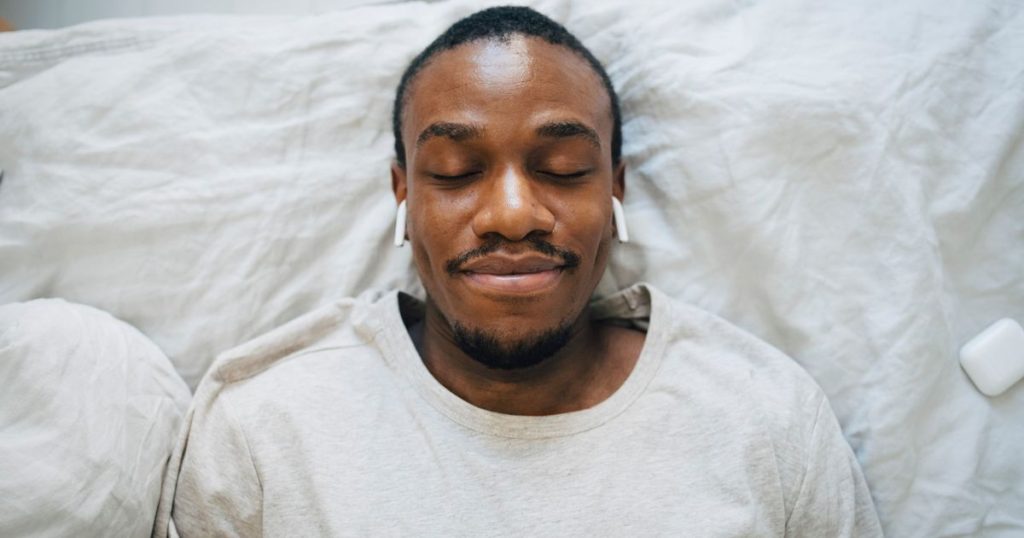The Rise of Green Noise: A Game Changer for Sleep?
In recent months, "green noise" has taken the internet by storm, with TikTok users swearing by its ability to improve sleep quality. Many claim it’s a "game changer," helping them drift off to sleep faster and more soundly than ever before. But what exactly is green noise, and does it live up to the hype? Unlike white noise, which includes all sound frequencies at equal intensity, green noise is a specific type of noise centered around 500 Hz. It mimics soft, natural sounds like ocean waves, waterfalls, and flowing rivers. To understand its potential benefits and limitations, we consulted sleep experts to dive deeper into the science behind green noise and its role in sleep.
What Is Green Noise, and How Does It Differ from Other Noises?
Green noise is a subset of white noise, but it occupies a narrower frequency range, typically around 500 Hz. This range is often described as more natural and less harsh than white noise, which can sometimes feel overwhelming or artificial. Sounds like gentle ocean waves, babbling brooks, and rustling leaves fall into the green noise category. On the other hand, white noise includes all audible frequencies at the same intensity, creating a flat sound spectrum. Examples of white noise include fan sounds, static, or hissing radiators.
Other types of noise, like pink and brown noise, also exist. Pink noise has a softer, deeper sound than white noise because it emphasizes lower frequencies. Brown noise, also known as red noise, is even deeper and more rumbling, similar to thunder or heavy waterfalls. Each "color" of noise serves a different purpose and appeals to different preferences. For instance, white noise is often recommended for masking background sounds in noisy environments, while pink and green noises are considered more soothing for falling asleep.
Can Green Noise Help You Fall Asleep Faster?
According to sleep experts, green noise may help some people fall asleep faster, but its effectiveness varies from person to person. Dr. Sarah Silverman, a holistic sleep doctor, explains that green noise can be beneficial for sleep onset, particularly in cases where high-frequency sounds are reduced. "When there’s less high-frequency noise, you may find it easier to fall asleep," she says. This is because green noise creates a calming, natural environment that distracts the brain from stressors or disruptive sounds, making it easier to relax.
However, it’s important not to place all your hopes on green noise keeping you asleep throughout the night. Kristen Casey, a clinical psychologist and insomnia specialist, notes that green noise is often most useful in the initial stages of sleep. "We suggest setting a timer for the noise to stop after a certain period so the person can maintain their sleep independently," she advises. For some people, continuous noise might become disruptive over time, especially if they’re sensitive to sound changes.
How to Use Green Noise Effectively for Sleep
While green noise can be a helpful tool for sleep, it’s not a one-size-fits-all solution. If you’re curious about trying it, experts recommend experimenting with different types of noise and settings to find what works best for you. White noise machines with adjustable options or apps like Spotify and YouTube offer a variety of green, pink, and white noise sounds to explore. When using green noise, consider setting a timer to avoid abrupt changes in sound that might wake you up later. Additionally, adjust the volume to a comfortable level that masks background noise without startling you.
It’s also important to remember that green noise is just one piece of the sleep puzzle. Prioritizing good sleep hygiene is crucial for restorative rest. This includes reducing stress before bed, practicing relaxation techniques like deep breathing, limiting screen time, and dimming the lights to signal to your brain that it’s time to sleep. Casey emphasizes that feeling relaxed and safe is key to falling asleep, and green noise can be a useful addition to these practices.
The Verdict: Is Green Noise Worth Trying?
So, is green noise the magic solution to better sleep? The answer is complicated. While some people find it incredibly helpful for falling asleep, it may not work for everyone, and its benefits are still being studied. Dr. Chris Winter, a neurologist and sleep specialist, believes green noise can be beneficial in certain situations, particularly in noisy environments. However, he also notes that silence is perfectly fine for sleep if you’re already comfortable without additional noise.
At the end of the day, the key to better sleep is personal preference and addressing the root causes of sleep challenges. If green noise helps you relax and fall asleep, it’s worth incorporating into your routine. On the other hand, if you prefer silence or find other methods more effective, that’s entirely okay. What matters most is prioritizing your sleep health through consistent, healthy habits. If you continue to struggle with sleep despite trying different strategies, it’s a good idea to consult a healthcare professional to rule out underlying issues like sleep apnea or anxiety. By focusing on what works best for you, you can create an environment that supports restful, restorative sleep.















